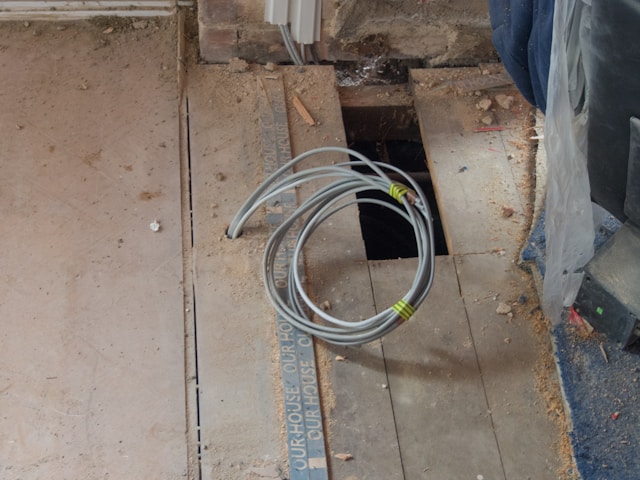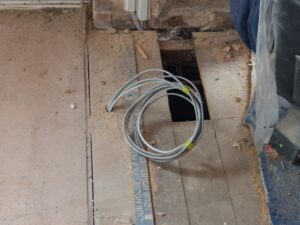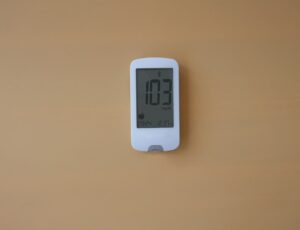We’ve all been there—standing in front of a clogged drain, wondering if we should reach for that trusty plunger or risk a messy disaster with some random tool we’ve found under the sink.
It’s tempting to grab whatever promises a quick fix, but using the right plumbing drain removal tools can save you a lot of time—and money—while preventing damage to your pipes.
So, how do you know which tools are worth your investment?
And how can you ensure that your clogged drain doesn’t become a bigger headache?
Whether it’s a minor blockage or something more stubborn, having the right tools makes all the difference. Each tool, from plungers to plumbing snakes, is designed to tackle specific problems, ensuring a smoother, more effective solution.
The trick is knowing which tool to reach for—and when it’s time to call in the professionals.
At Excel Mechanical, we understand that not every clog can be easily cleared with a plunger. That’s why we offer expert plumbing services to handle those stubborn blockages. Whether it’s a simple fix or a more complex issue, we’re here to make sure your drains are clear, your pipes stay in great shape, and you get the best value for your investment.
In this blog, you’ll discover:
- The different plumbing drain removal tools you need to know about.
- How to choose the right tool for various types of clogs.
- When to tackle the problem yourself and when it’s best to call a professional.
Let’s get started!
Overview of Plumbing Drain Removal
Using the right tools is key when dealing with plumbing drain clogs.
Common tools include plungers, drain snakes, and augers. Each serves a specific purpose and comes in various sizes. Using the right tool for the job can save time and prevent damage.
- Plungers are often used for simple clogs in toilets or sinks. They create suction to dislodge blockages.
- Drain snakes, or plumbing snakes, are flexible tools that reach deeper into pipes to break up blockages.
- Augers are like heavy-duty snakes and are excellent for more challenging clogs.
Here are some tips to consider:
- Regular maintenance can prevent serious clogs.
- Always wear protective gloves when handling plumbing tools.
- Avoid using chemicals, as they can damage pipes.
Types of Plumbing Drains
Plumbing drains are essential for removing wastewater from different fixtures in a building. Each type of drain has specific features and works with different tools. Knowing these can help you address any plumbing issues effectively.
Sink Drains
Sink drains are often found in kitchens and bathrooms. They connect to the drainpipe beneath the sink fixture. This type includes a P-trap, which curves to prevent sewer gases from entering your home.
Sometimes, sink drains get clogged with food or debris. Regular cleaning can prevent this problem. Use a plunger or a plumber’s snake to clear blockages. It’s essential to have the right tools.
Our team can effectively assist with sink drain issues, ensuring smooth drainage in your home or business.
Tub and Shower Drains
Tub and shower drains help remove water quickly to avoid flooding the bathroom. These drains connect to a P-trap under the floor. This trap keeps out foul odors and gases.
Hair and soap scum can block tub and shower drains. Regular removal of debris can prevent clogs. Sometimes, using a drain screen helps catch hair. Plungers and snakes are helpful tools for clearing these clogs.
We provide expert solutions for tub and shower drain problems. We focus on quality and value to meet your needs and budget.
Toilet Drains
Toilet drains are designed to handle waste and toilet paper. They are connected to the main sewer line. Proper function of these drains is crucial for sanitation and hygiene.
Clogs often occur due to excessive paper usage or non-flushable items. A toilet auger or plunger is often used to address clogs. These tools can quickly deal with many common blockages.
Maintaining toilet drains helps prevent larger plumbing issues. Regular checks and cleaning are advisable for optimal operation.
Floor Drains
Floor drains are found in basements, laundry rooms, or garages. This drain type manages water runoff. It prevents flooding and water damage.
They have a grate cover to catch debris, allowing only water to pass through. Regular cleaning of the cover and drain helps prevent clogs. A wet/dry vacuum may assist in maintaining floor drain efficiency.
Floor drains should be inspected occasionally to ensure proper function. Proper maintenance is vital to avoid flooding and keep water management in place.
Common Plumbing Drain Removal Tools
Having the right tools can greatly simplify plumbing issues. Each tool mentioned below has unique features that suit specific plumbing challenges. Let’s explore these essential tools to help you tackle drain removal more effectively.
Pipe Wrenches
Pipe wrenches are crucial for gripping and turning pipes.
They come in various sizes and are perfect for loosening or tightening fittings and nuts. The adjustable jaws grip firmly, making working with different pipe sizes easier.
A pipe wrench is handy when dealing with stubborn or rusted pipes. Remember to position the wrench correctly to avoid damaging the pipe. Keep the wrench clean and oil-free to ensure the best results and a secure grip.
Plunger
The plunger is a simple but effective tool for unclogging drains, especially in sinks and toilets. It works by creating suction to dislodge blockages. For best results, make sure there’s enough water in the fixture to cover the plunger’s rubber cup.
Apply even pressure to build suction and repeat several times if necessary. A good plunger is a must-have for minor clogs in homes or businesses. Always keep it accessible for quick fixes.
Hand Auger
A hand auger, a plumber’s snake, is ideal for clearing clogs in small pipes. It’s a long, flexible tool that can navigate through curves in plumbing. The hand-crank feature makes it easy to push the auger through blockages.
Use this tool for clogs that are too stubborn for a plunger. Proper usage involves inserting it slowly to avoid pipe damage. A hand auger is very handy for tricky, deep clogs.
Drain Snake
The drain snake is excellent for addressing more significant blockages.
Unlike a hand auger, it can reach further into the plumbing system. It’s often motorized, allowing for more effective penetration into the clog.
This tool is especially beneficial for serious blockages in larger pipes. To avoid damaging pipes or injuring yourself, follow the manufacturer’s instructions. A drain snake can be a valuable part of your plumbing kit for tougher jobs.
Closet Auger
A closet auger is specifically designed for toilets. Its unique shape and length make it perfect for navigating the toilet’s S-shaped trap. A handle steers the flexible cable and effectively removes clogs without damaging the toilet.
Using a closet auger requires gentle handling to prevent scratching the bowl. This tool should be your first choice for persistent toilet clogs that a plunger can’t solve.
Tub Drain Remover
A tub drain remover tool is essential for working with bathtub drains.
It lets you easily remove and replace the drain assembly without damaging the tub. This tool is handy when cleaning or replacing a faulty drain.
It’s designed to fit different sizes of drains, making it versatile and practical. Having this tool can make installing or repairing tub drains smoother and more efficient.
Manual Drain Removal Techniques
Dealing with clogged drains can be frustrating, but manual drain removal techniques offer a straightforward solution. These methods don’t require much beyond basic tools and a bit of effort.
- Plunger Usage: A plunger is a simple tool for clearing blockages. Position the plunger over the drain, ensuring a tight seal. Push and pull forcefully to create pressure that may dislodge the clog.
- Drain Snake: A drain snake, a plumber’s auger, is effective for tougher clogs. Insert the snake into the drain and rotate the handle. This can break up or pull out the obstruction.
- Baking Soda and Vinegar: Sometimes, natural solutions work well. Pour half a cup of baking soda and half a cup of vinegar into the drain. Let it sit for about 30 minutes, then flush with hot water.
- Boiling Water: Pouring boiling water down the drain can dissolve some types of clogs, particularly those caused by grease. Repeat this method several times, allowing each water kettle to work through the pipes.
If these techniques don’t work, it may be time to call in professionals. At Excel Mechanical, we offer top-notch plumbing services tailored to meet your needs and budget. Our team is dedicated to providing exceptional quality and great value for residential and commercial spaces.
Don’t hesitate to reach out for expert help!
Power Tools for Drain Removal
Using power tools can make drain removal easier and more efficient. These tools are designed to quickly and safely clear drains, reducing time and effort. Understanding which tools to use can save you money and help avoid future issues.
Electric Drain Augers
Electric drain augers are essential for tackling clogs in hard-to-reach spots.
They use a motorized cable that extends into the pipes, breaking up or pulling out blockages. These devices are beneficial for dealing with deep clogs that manual tools cannot reach.
Depending on your needs, you can choose from handheld models or larger, more powerful machines. Handheld augers are portable and convenient, ideal for minor clogs, while larger units offer more power for tougher jobs.
Select the right tool for the pipe size and clog type.
Reciprocating Saws
Reciprocating saws are not just for wood or metal; they are effective for cutting through tough plumbing materials that might be causing blockages. These saws work with a push-and-pull motion, which makes them precise and powerful for drain removal tasks.
Using different blade types, you can cut through plastic or metal pipes to remove damaged sections or reach stubborn clogs. Safety is crucial when using these tools, so always wear protective gear and follow instructions carefully.
Professional handling of these tools reduces the risk of damage to your plumbing system, and our team is equipped to manage such tasks efficiently to protect your investment.
Impact Wrenches
Impact wrenches are another valuable tool for plumbing tasks, particularly when removing stubborn bolts and fittings. These power tools use rapid, high-torque impacts to loosen tight connections quickly.
They are especially useful when dealing with drains that have rusted or seized components. Choosing the right size and power level can ensure that fittings are removed without damaging the surrounding pipes.
Having a skilled professional help maintain the integrity of your system for complex plumbing jobs where precision is key.
Safety Considerations in Drain Removal
Safety is crucial when removing a drain.
- Protect yourself with the right gear. Wear gloves to guard against sharp edges and chemicals. Use eye protection to prevent debris from causing injuries. These simple measures can help avoid unexpected accidents.
- Always ensure your tools are in good condition. Damaged or worn-out tools can pose significant risks. Keep a clean workspace, free from clutter, to avoid tripping or accidents.
- Before starting, know the location of shut-off valves and use them if necessary. This can prevent leaks or flooding while you work. Understanding your plumbing system can make a big difference.
- Stay informed about any potential hazards from chemicals used for cleaning or unclogging. Some may release harmful fumes or cause burns on contact. Always read labels and follow safety instructions carefully.
Plumbing can be tricky, but following these precautions can minimize risks. Whether you tackle it yourself or call the experts at Excel Mechanical, your safety should always come first. Good preparation and caution lead to successful drain removal.
Troubleshooting Drain Removal Challenges
When removing drains, you might face several challenges.
- Clogged Drains: These are common and can be tricky. Use a plunger to create suction and break up the clog. If this doesn’t work, consider a drain snake.
- Corroded Parts: Over time, corrosion can make it difficult to remove parts. Apply penetrating oil and let it sit for a while. This helps loosen stubborn bolts or nuts. A wrench might be needed for extra grip.
- Stripped Screws or Bolts: If a screw or bolt is stripped, try using a rubber band between the screwdriver and the screw head. This increases friction and provides a better grip.
- Leak Prevention: When reassembling, ensure all parts are secured tightly. Use plumber’s tape to seal threads and prevent leaks. Always test the system by running water once the parts are back in place. Look for any signs of leaking to avoid future problems.
If you encounter persistent issues, consider reaching out to us. Our team works to provide exceptional service and solutions that fit your requirements with great value. These quick fixes might not cover every problem, but having the right tools and methods can significantly improve your chances of success.
Maintenance Tips Post-Drain Removal
After removing a drain clog, keeping your plumbing in good condition is essential. Regular maintenance can prevent future issues and help your system operate smoothly.
- Regular Flushing: Pour hot water down your drains weekly. This can help clear minor blockages and maintain flow.
- Avoid Harsh Chemicals: Use mild, environmentally friendly cleaners to avoid damaging pipes.
- Trap Cleaning: Check and clean drain traps regularly. This can prevent buildup and enhance drainage efficiency.
- Strain Protection: Use strainers in sinks and showers. These capture hair, food, and other debris before they enter pipes.
- Inspect Regularly: Periodically check pipes for leaks or corrosion. Addressing small issues early can save money.
Choose our team for professional maintenance. We deliver exceptional value and prioritize customer satisfaction to ensure your systems run efficiently.
Proper Disposal of Removed Drain Components
When you remove plumbing components from your drains, it’s essential to dispose of them responsibly. Some materials can be harmful to the environment if not handled correctly.
Metal pipes, for instance, can usually be recycled. Check with local recycling centers to find out the best way to recycle these pieces.
Old rubber gaskets and seals should be thrown away in your regular trash. Plastic pipes might also be recyclable; look for recycling symbols and numbers to know. Contact your local waste management service for guidance.
Contact your city’s hazardous waste facility for hazardous materials like chemicals or old solvent-soaked cloths. Such materials should not be mixed with regular waste.
Should you need professional help for plumbing or HVAC services, count on Excel Mechanical. We prioritize quality and value, aiming to deliver systems tailored to your needs and budget.
Frequently Asked Questions
Clogged drains are an inevitable part of life, but knowing the right tools and methods to fix them can save you a lot of frustration. We’ve gathered some common questions about plumbing drain removal tools and solutions that will help you maintain a smoothly running home or business.
What type of wrench is best for removing a bathtub drain?
A heavy-duty adjustable wrench is often the most reliable option for bathtub drains. Ensure it fits snugly around the drain fitting to provide the necessary torque without slipping.
How do you use a drain removal tool for a tub?
First, insert the tool into the drain. Turn it counterclockwise while applying steady pressure to unscrew the drain. This helps you remove the drain without damaging surrounding fixtures.
Are there alternative tools to use if you don’t have a tub drain removal tool?
If a specialized tool isn’t available, needle-nose pliers or groove-joint pliers can be used. These tools can grip the crossbars of the drain fitting, allowing you to twist it out with caution.
Why might a bathtub drain be difficult to unscrew?
Over time, debris or corrosion can cause a drain to stick, making it harder to unscrew. Regular maintenance and cleaning can help prevent this problem.
What steps should you take to properly remove a shower drain?
Start by removing the drain cover. Use a plunger to clear any debris. Then, use a drain removal tool or wrench, turning counterclockwise to loosen the drain.
Where can you find high-quality plumbing drain removal tools?
At Excel Mechanical, we offer a range of premium plumbing tools. We’re committed to providing systems tailored to individual needs, ensuring the best value. Our selection offers exceptional quality for both residential and commercial requirements.




